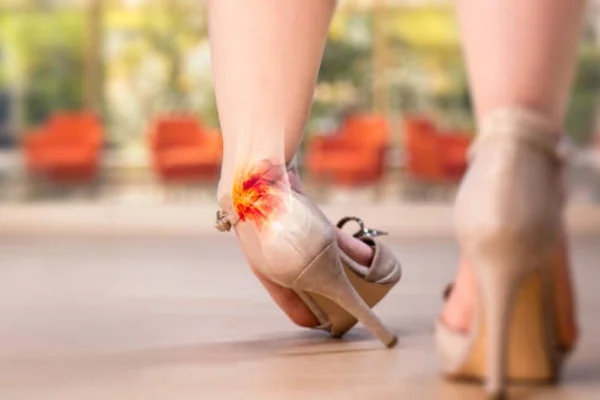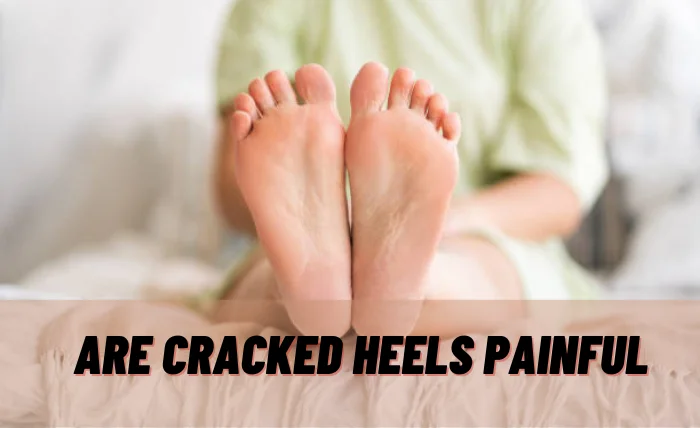Cracked heels might seem like a mere cosmetic issue, but there’s more beneath the surface. Imagine walking on a path of discomfort with every step. That’s the reality for those enduring the pain of cracked heels. Not just an eyesore, these fissures can delve deep, transforming every stride into a test of endurance. This isn’t about vanity; it’s about comfort and health. Why do our heels crack, and when do they cross the line from unsightly to heels painful? Dive into the world of foot care to uncover the truth behind cracked heels, their impact on our daily lives, and how to stride towards relief. Welcome to a journey of understanding and healing, where every step can feel like a leap towards comfort.
Are Cracked Heels Painful

The Pain Factor
For many, the question isn’t just whether cracked heels are unsightly but whether they cause pain. The answer is yes, they can be quite painful, especially when the fissures are deep enough to affect the deeper layers of skin or lead to bleeding or infections.
Causes of Cracked Heels
Understanding the underlying causes is crucial for both prevention and treatment. Factors contributing to cracked heels include:
- Dry Skin: The most common reason, dry skin can lead to cracking and peeling.
- Prolonged Standing: Standing for extended periods puts extra pressure on the feet, exacerbating the risk of cracks.
- Poorly Fitting Shoes: Shoes that do not fit properly can distribute weight unevenly on the feet, leading to cracked heels.
- Obesity: Extra weight increases the pressure on the footpad, leading to cracked heels.
- Skin Conditions: Psoriasis, eczema, and other skin conditions can contribute to the development of cracked heels.
Prevention Tips
Preventing cracked heels begins with good foot hygiene and self-care practices:
- Moisturize Regularly: Applying a good quality foot cream or moisturizer daily can keep the skin supple and prevent cracking.
- Wear Proper Footwear: Shoes that fit well and provide adequate cushioning can help distribute body weight evenly.
- Stay Hydrated: Drinking plenty of water helps maintain skin hydration.
- Use Humidifiers: Adding moisture to the air, especially in dry climates, can help prevent skin from drying out.
Treatment Options
For those already suffering from painful cracked heels, there are several effective treatment options:
- Over-the-counter Moisturizers: Special foot creams designed for cracked heels can provide relief.
- Soaking and Exfoliating: Soaking feet in lukewarm water followed by gentle exfoliation can remove dead skin and promote healing.
- Medical Attention: In cases of severe cracks or infections, consulting a healthcare professional is advised. They may prescribe antibiotic creams or recommend other treatments like medical-grade lotions or pads.
When to See a Doctor
It’s essential to seek medical advice if:
- Cracks bleed or show signs of infection (redness, warmth, swelling, or pain).
- You have diabetes or another condition that slows healing or increases the risk of infection.
- Home treatments do not improve the condition within a few weeks.
The Role of Diet and Nutrition
A diet rich in essential nutrients like omega-3 fatty acids, vitamin E, and zinc can support skin health and prevent cracked heels. Incorporating foods such as nuts, seeds, fish, and green vegetables into your diet can make a significant difference.
Conclusion
The question of Are Cracked Heels Painful? is met with a resounding yes, emphasizing the importance of understanding the causes, prevention, and treatment options available. Addressing cracked heels is not merely cosmetic but a necessary step towards ensuring comfort, health, and overall well-being. Through proper care, dietary considerations, and professional advice when needed, individuals can alleviate the discomfort of cracked heels and step forward with confidence and ease.

